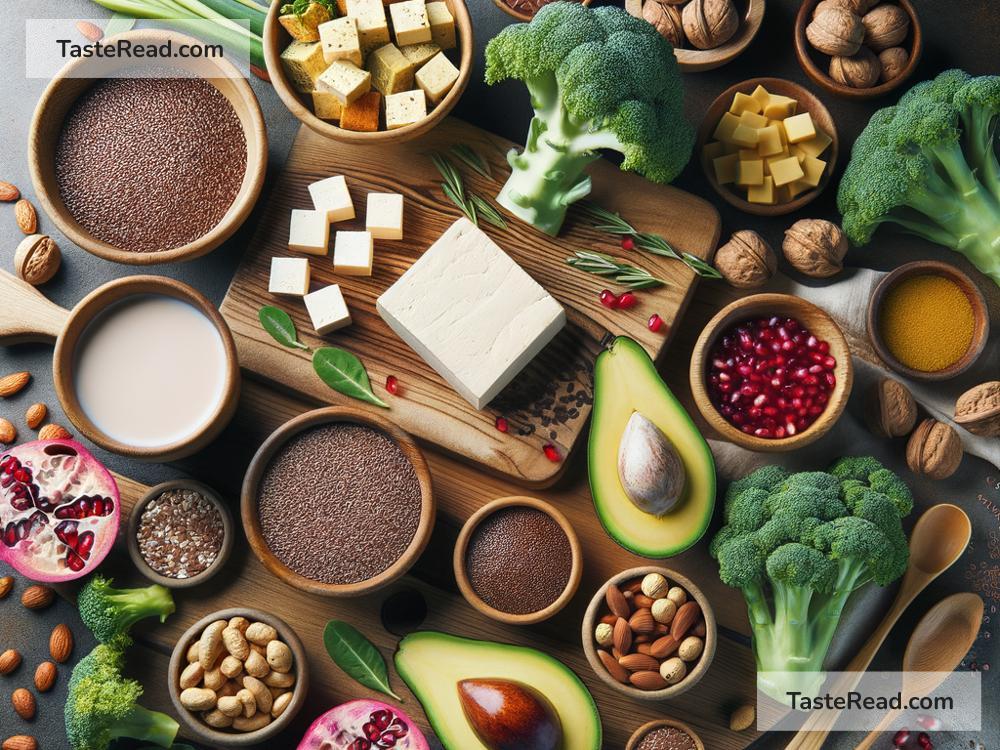Foods That Improve Estrogen Balance: Eat Your Way to Hormonal Health
Hormones play a big role in our health, and one of the most important hormones for women is estrogen. Estrogen helps control everything from menstrual cycles and reproduction to bone health and mood. But here’s the thing—it’s all about balance. Too much or too little estrogen can cause problems like heavy periods, irregular cycles, weight gain, fatigue, acne, or even increased risk of certain diseases. The good news is that what you eat can help improve estrogen balance naturally. Let’s explore the foods that can help maintain healthy estrogen levels and keep your hormones happy.
Why Is Estrogen Balance Important?
Estrogen is a hormone found in both men and women, but women tend to have higher amounts because it’s essential for many processes in the female body. If estrogen levels are too low or too high, you might experience symptoms like mood swings, hot flashes, or changes in your libido. Over time, imbalanced estrogen can lead to long-term health issues, such as osteoporosis, infertility, or even certain types of cancer.
So, keeping estrogen in check isn’t just about immediate comfort—it’s about protecting your long-term health.
How Food Impacts Estrogen Levels
Food can affect estrogen levels in two major ways:
-
Phytoestrogens: These plant-based compounds mimic estrogen in the body, which can help balance levels if they’re too low. However, they can also block excess estrogen if levels are too high, making them useful for overall hormonal health.
-
Fiber and Detoxification: Estrogen isn’t just produced and used—your body needs to get rid of it once it’s done its job. Fiber helps flush out excess estrogen, preventing it from building up and causing an imbalance.
Top Foods for Estrogen Balance
Let’s dive into the specific foods that can help optimize estrogen levels and improve hormonal health.
1. Flaxseeds
Flaxseeds are one of the most powerful foods for estrogen balance. They’re rich in lignans, a type of phytoestrogen that can help regulate estrogen levels. Flaxseeds are also high in fiber, which helps the body eliminate excess estrogen. Add a tablespoon of ground flaxseeds to your smoothie, oatmeal, or yogurt for a boost of hormonal support.
2. Soy Foods
Soy is another excellent source of phytoestrogens, specifically isoflavones. Foods like tofu, edamame, and tempeh can support estrogen balance. Some people worry about soy increasing estrogen too much, but moderate amounts of whole soy foods can be beneficial, especially if you’re experiencing menopause-related symptoms.
3. Cruciferous Vegetables
Vegetables like broccoli, cauliflower, cabbage, and Brussels sprouts contain compounds called indole-3-carbinol that help your liver process and eliminate excess estrogen. These veggies are also packed with antioxidants that protect your body from inflammation. Try roasting them or adding them to stir-fries for easy, delicious meals.
4. Whole Grains
Fiber-rich whole grains like oats, quinoa, brown rice, and barley are great for estrogen balance. Fiber helps your digestive system remove estrogen that your body no longer needs, preventing buildup. Swap refined grains (like white bread) for whole grains to support better hormonal health.
5. Leafy Greens
Spinach, kale, and other leafy greens are loaded with nutrients that support your liver—the organ responsible for processing estrogen. They also contain antioxidants that protect your cells from damage. Aim to eat a handful of greens daily, whether in a salad, smoothie, or sautéed.
6. Seeds and Nuts
In addition to flaxseeds, other seeds like chia, sunflower, and sesame seeds can help regulate estrogen levels. Nuts like almonds and walnuts are also full of healthy fats and nutrients that support hormone production. Snack on a handful of nuts and seeds daily or sprinkle them onto meals.
7. Berries
Berries like blueberries, strawberries, and raspberries are rich in antioxidants and fiber. Antioxidants can reduce inflammation and protect your estrogen-producing cells, while fiber helps eliminate excess hormones. They’re also delicious and easy to add to smoothies, yogurt, or oatmeal.
8. Healthy Fats
Fat is essential for hormone production, and choosing the right fats can make a big difference. Focus on healthy fats like avocados, olive oil, and fatty fish (like salmon). Omega-3 fatty acids found in fish are particularly beneficial for reducing inflammation and supporting hormonal health.
9. Green Tea
While technically a beverage, green tea deserves a spot on this list. It contains catechins, powerful antioxidants that can help regulate estrogen balance and support overall hormone health. Swap your coffee for green tea occasionally for a hormone-friendly alternative.
Foods to Limit or Avoid
While some foods help improve estrogen balance, others may throw it off. Here are a few to watch out for:
- Processed Foods: These are often full of unhealthy fats, sugars, and additives that disrupt hormone production.
- Alcohol: Drinking too much can interfere with your liver’s ability to process estrogen, leading to a buildup.
- Excess Sugar: High sugar intake can cause inflammation and hormonal imbalances over time.
Final Thoughts
Your diet directly impacts your hormonal health, including estrogen balance. Adding phytoestrogens, fiber, antioxidants, and healthy fats can support your body’s ability to regulate estrogen naturally. Whether you’re trying to ease menopause symptoms, improve your cycle, or simply maintain good health, incorporating these foods can make a big difference.
Start small—add a handful of flaxseeds to your oatmeal, toss some spinach into your smoothie, or swap white bread for whole grain. Over time, these simple changes can improve your estrogen balance and help you feel better both physically and emotionally.
Remember, food is medicine! By nourishing your body with the right ingredients, you’re giving it the tools it needs to thrive.
Have you tried any of these foods for hormonal health? Let us know in the comments!


